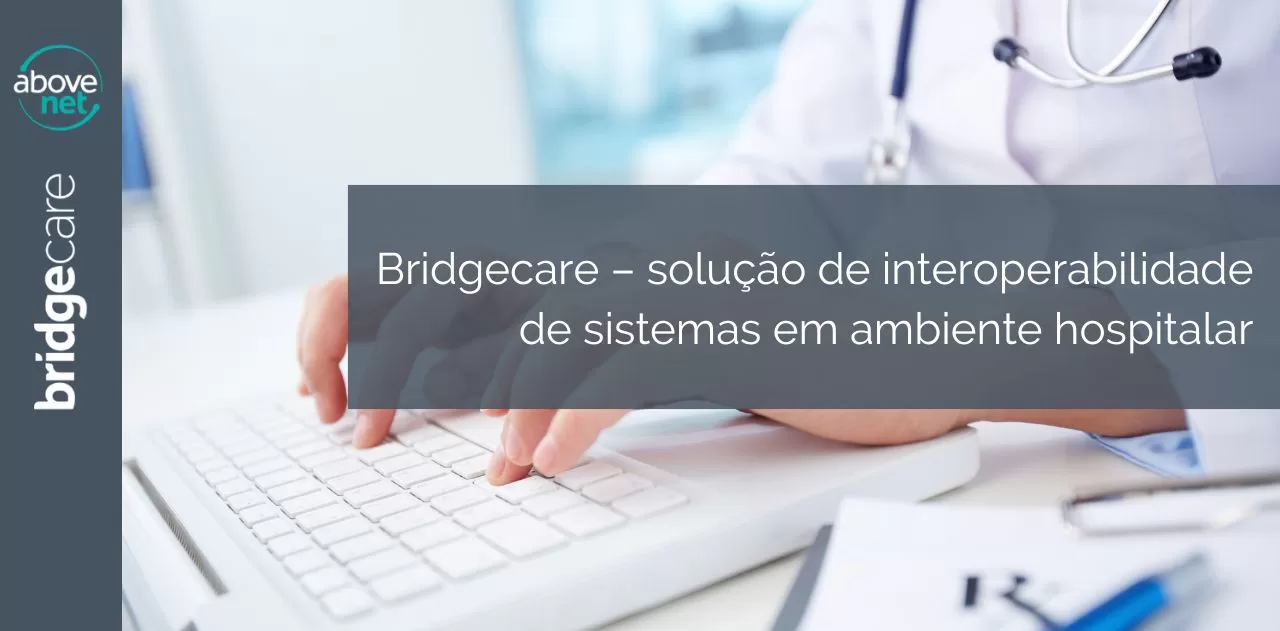Bridgecare® - System and equipment interoperability solution in hospital environments
Digitization is increasingly present in the daily life of companies, improving processes and workers productivity. In the health sector is no different, and the benefits also directly achieve the well-being of users, promoting the decentralization of exams and consultations through telemedicine.
However, in hospital environments there is a growing demand for the management of information from various data sources, a factor that hinders communication in a unified way, increases the load of the systems and generates incompatibility between the information.
In an attempt to optimize the flow of internal processes, all data management goes through the HIS (Information System Hospital) system and other systems are integrated, the main ones are:
PACS: Image archiving and sharing system - is a system used to store virtually all diagnostic image exam files. Thus, any member of the internal team of the clinic or hospital can search for this information and raise more specific exam data at any time in an organized manner.
RIS: Radiology Information System - It is the software that acts as a “brain” of an image center, helping the clinic or hospital team to maintain control over all the tests performed from all patients, in an organized and standardized manner.
LIS: Laboratory Information System - It is a computerized system that records, manages and stores data and information for clinical analysis laboratories.
The integration of these systems within history is often complex, for IT teams the task has become more challenging with the inclusion of IoT sensors for clinical engineering telemetry and new medical equipment connected to systems. And when we think of different suppliers of these solutions with custom systems (HIS / LIS / PACS), information integration and management becomes a true plot.
It was also integrated into the HIS system telemedicine. This new modality of medical care has grown exponentially worldwide. In Brazil, one of the largest diagnosed medicine networks released 226% growth in teleconsultures in the first two months of 2022.
The effect of this increase is directly related to the health crisis, however, industry experts believe in the rise of the consultation model even after the pandemic.
A survey by Milling Intelligence, indicates that the telemedicine market should go from the current US $ 38 billion to US $ 168 billion by 2026 . In Brazil alone, the telemedicine market closed the year 2022 with revenues of US $ 2.82 billion , according to Statista, a company that specializes in analyzing market and consumer information.
Interoperability of data in the hospital environment
Medicine digitization also means bringing more technology into hospitals, requiring administrative managers and hospitalizing greater attention to the use of systems and data collection.
As described earlier, in itself data management in a hospital environment is a great challenge. The variety of existing systems and the consequent need for interoperability make it impossible to connect point to point in service and organizational environments.
The problem gets worse when the health organization has several points and bases of decentralized care resulting in multiple records and lost information.
So that health organizations can overcome this challenge Above-Net Bridgecare solution . A platform capable of integrating in only one central repository, information from various distinct systems and sharing them in various existing formats and protocols by bridging multiple technologies.
Bridgecare® natively integrates the systems used in the hospital environment (HIS / LIS / PACS), connecting the information to the central repository in a sanitized manner. The database monitors against duplicate records, homonymous and information conflicts in a customized manner.
This also brings greater safety and provides the monitoring of the patient's life within the health system, regardless of the unit or legacy system in which he has been attended.
The solution uses modern transmission protocols such as HL7 (Health Level 7) or even in text format for legacy systems. Through their own technology, equipment locations are automatic. Bridgecare® acts as a central repository of all information, in addition, the platform integrates equipment, measurements and sensors providing integrated visibility and management for clinical engineering for hospital maintenance and management.
Process Optimization
The BridgeCare platform supports IT processes optimizing the quality of the organization's information, such as: for example:
Unified Login Service: With encryption for employees who use all the systems of the institution where only one username and password is used regardless of the access system;
Configured Smart Hygiene: There are more than 40 smart and configurable rules that allow the identification of historical or real -time duplicate records of connections and interface for registration pending resolution.
Terminology Service: Provides flexibility for interconnecting terms and standards between any system with a versioning record that allows the evolution by connector independently.
Command Center: IoT for Infrastructure, Clinical Engineering and Equipment-Monitor through ABOVE Above-Net , Cold Chambers, Medicinal Gas Center, Medical IT, Power, Water and Air Centrals, Equipment, with Predictive Analysis of the functioning of the vital structure of hospitals and care centers.
The Bridgecare platform is a success case used by one of the largest cities in the world. There are thousands of care points integrating data and managing information from more than 25 million patients with more than 200 million care with security and reliability through the use of communication protocols and forms of integration used in the most demanding applications of the industry.
Are you interested in health systems interoperability solutions? Fill out the form below that we will contact us:


